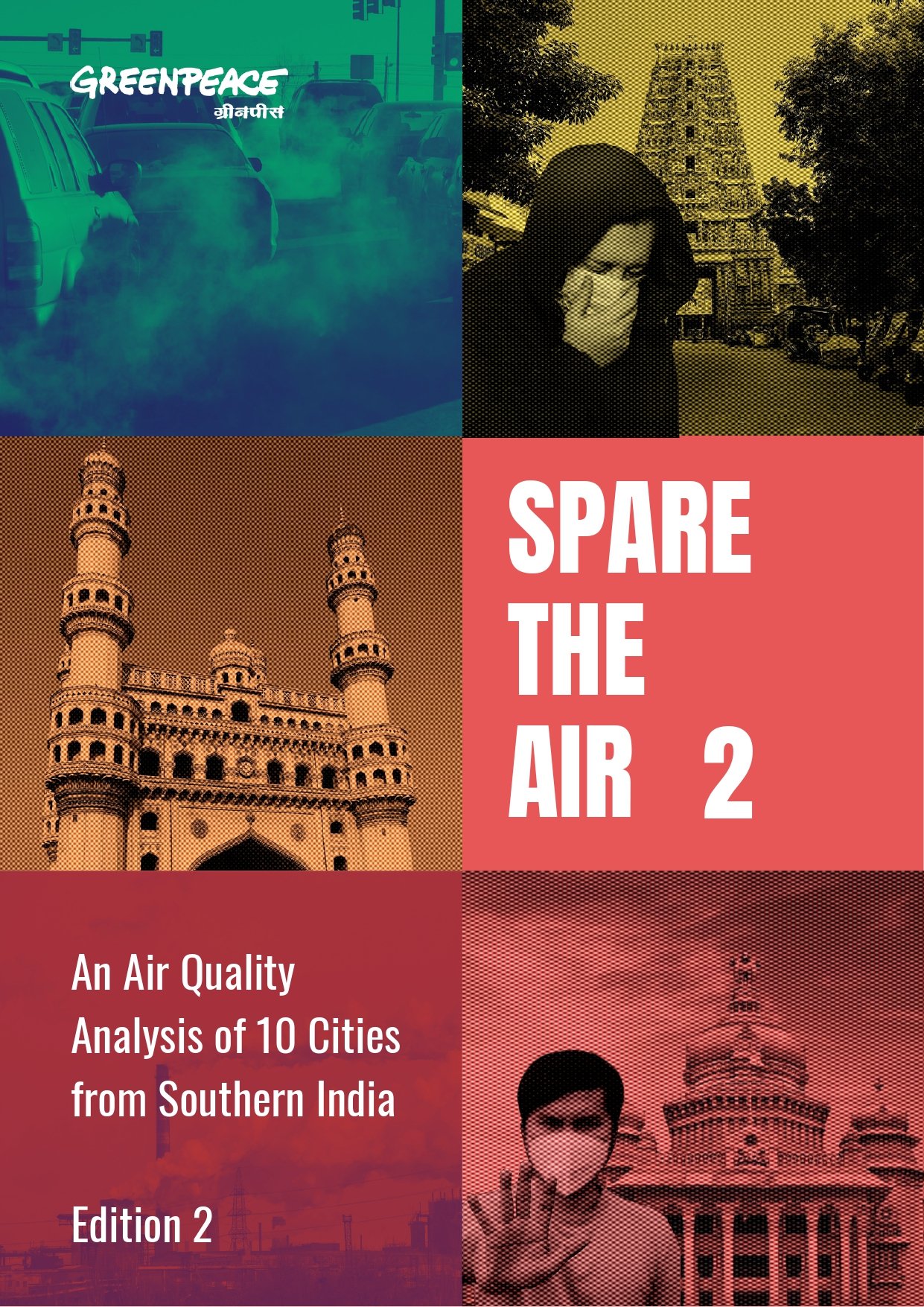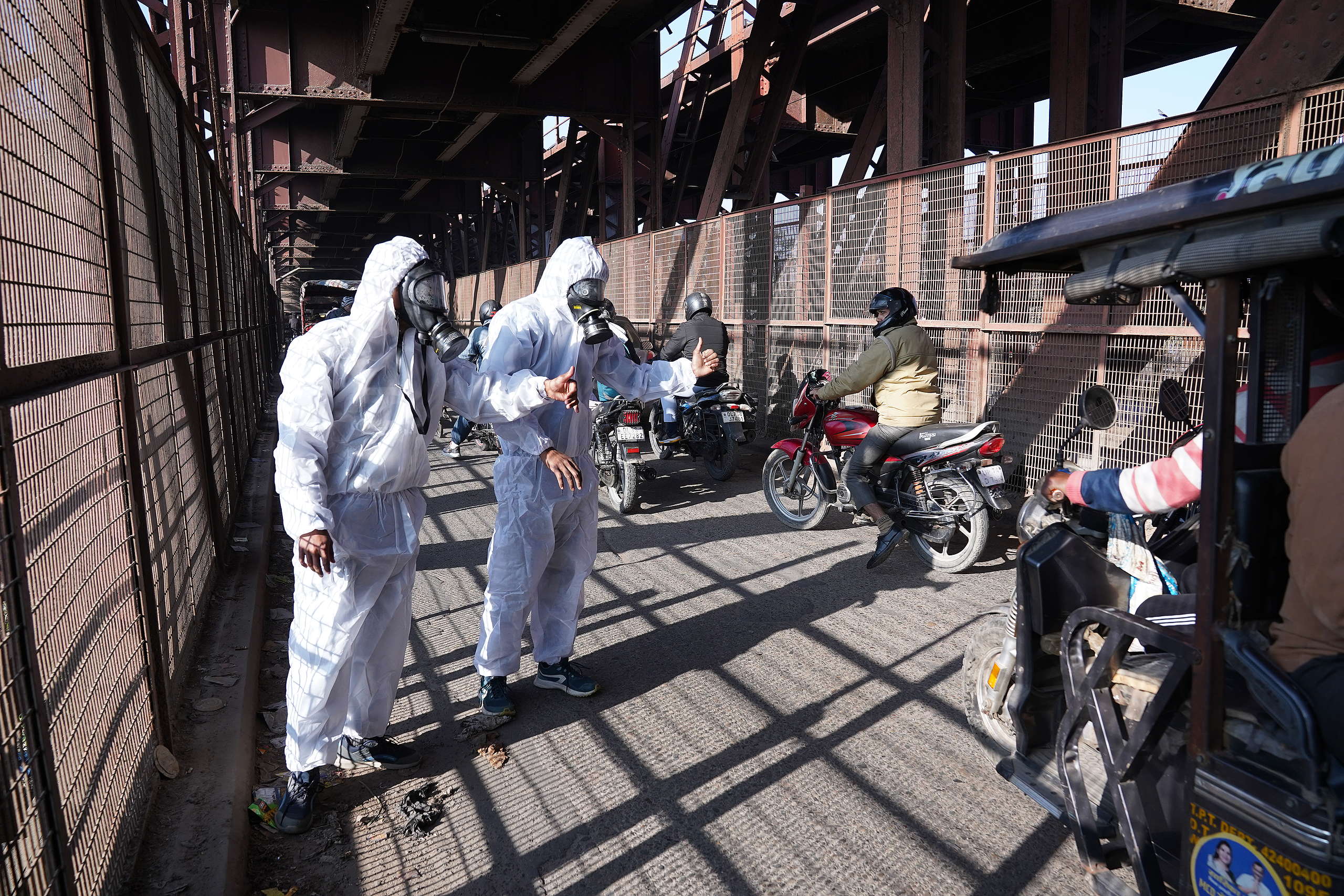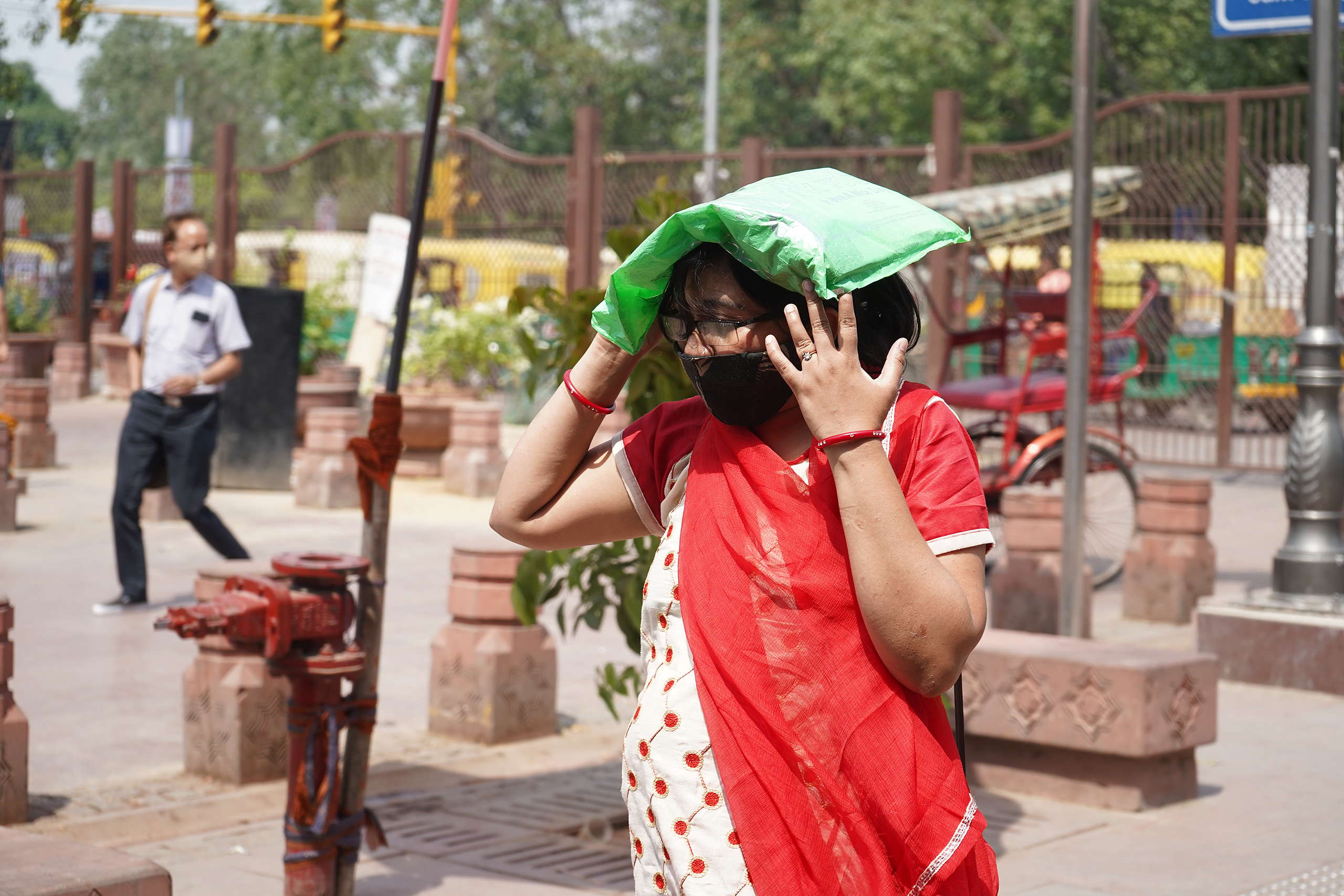Bengaluru, September 6: A latest report by Greenpeace India,’Spare the Air-2’ flags serious health concerns as the average PM2.5 and PM10 levels soars in 10 major cities of Southern India significantly exceeding the air quality guidelines set by World Health Organization (WHO).
The report analyzes the air quality standards of Hyderabad, Chennai,Visakhapatnam, Kochi, Mangaluru, Amravati, Vijayawada, Visakhapatnam, Bengaluru, Mysore and Puducherry. The study found that in Visakhapatnam, PM2.5 is 10 times and PM10 is 9 times higher than WHO guidelines, and also significantly surpasses NAAQS limits. When compared with WHO guidelines, the annual average PM2.5 levels are found to be 6 to 7 times higher in Hyderabad, Vijayawada, Kochi, Mangaluru, Amaravati, and Chennai. Additionally, comparing PM10 levels with WHO guidelines reveals that Bengaluru, Puducherry, and Mysuru have annual averages that exceed these guidelines by 4 to 5 times.
The lead researcher of the report Akanksha Singh says,“ Clean air is fundamental to our health, yet this report reveals that particulate matter levels in all cities have surpassed the revised WHO guidelines. While current efforts are focused on cities not meeting the National ambient air quality standards, it is crucial to also address those cities that are currently in compliance. Proactively managing air quality in these areas can help prevent them from falling into non-attainment”.
Further shedding a light on the report findings, Selomi’s Garnaik, Greenpeace India’s campaigner adds “Our recent analysis of PM10 and PM2.5 levels in ten southern cities of India reveals a stark reality; air pollution is not confined to northern regions but is a pressing crisis affecting the entire country. The levels of these pollutants in southern cities have alarmingly surpassed WHO guidelines, posing severe risks to public health”.
“To address this, we continue urging the Central Pollution Control Board (CPCB) to adopt a health-based approach in revising the National Ambient Air Quality Standards (NAAQS), striving to meet WHO’s latest scientific guidelines. Given the distinct pollution profiles and climatic conditions of southern cities, it is crucial to establish region-specific air quality standards aligned with local airshed management. This tailored approach will ensure more effective measures for managing air pollution and safeguarding public health in these regions”. She further said.
The report strongly advocates for new NAAQ standards considering the unique pollution profiles and climatic conditions of South Indian cities. It also recommends Increased investment towards developing a “hybrid” air quality monitoring network facilitating real-time public access to air quality information. It further suggests the local governments should promote renewable energy solutions while also mapping the sectoral hotspot zones to develop targeted action points for effective pollution control as well as to create awareness programmes to encourage people to adopt sustainable practices such as public transport, electric vehicles and solar energy to reduce fossil fuel dependency.
Avinash Chanchal, Greenpeace India’s campaign manager said “The report’s findings debunk the myth of cleaner air in the southern states. Alarmingly, not a single major city in these states meets the WHO’s standards for safe and healthy air. This report should serve as a wake up call for the governments of southern cities. It’s imperative to adopt a comprehensive and long term strategy to improve air quality, addressing the persistent major contributors such as emissions from vehicles, power plants, industry, waste, construction and other sectors. We must not forget that any delay puts public health at risk”.
For more information, please contact
Shweta Singh
[email protected]
9691330473
Selomi Garnaik
Email: [email protected]
Phone: 7991000638
Annexure I
Key highlights-
- This analysis focuses on the 10 south Indian cities, five of which (Bengaluru, Hyderabad, Chennai, Vijayawada, and Visakhapatnam) are non-attainment cities under NCAP.
- The yearly and monthly levels of PM2.5 and PM10 exceeded the revised WHO standards in all studied south Indian cities.
- In Visakhapatnam, PM2.5 levels are ten times and PM10 levels are 9 times higher than the revised WHO standards. Similarly, PM2.5 is 1.5 times, and PM10 is 2.5 times higher than NAAQS standards.
- The annual average level of PM2.5 is 6 to 7 times higher than WHO standards in Hyderabad, Vijayawada, Kochi, Mangaluru, Amaravati and Chennai.
- The annual average of PM10 levels are slightly to 1.5 times higher than NAAQS standards in Mangaluru, Hyderabad, Kochi, Amravati, Chennai and Vijayawada.
- The monthly average trend in Bengaluru city shows that PM2.5 levels are 5 to 6 times higher, and PM10 levels are 3 to 4.5 times higher than WHO guidelines in all months. Meanwhile, PM10 exceeds NAAQS limits in February, March, April, October, November, and December.
- The monthly average trend in Hyderabad city shows that PM2.5 levels are 7 to 8 times higher and PM10 levels are 4 to 5 times higher than WHO annual guidelines. PM2.5 exceeds NAAQS annual limits from January to April, November, and December. PM10 exceeds NAAQS limits in January to June, August, October, November, and December.
- The monthly average Trend in Chennai city shows that PM2.5 levels are 4 to 7 times higher and PM10 levels are 3 to 6 times higher than WHO annual guidelines. PM2.5 exceeds NAAQS annual limits in January, while PM10 exceeds limits in January, February, October, and December.
- This report finds that air pollution is a matter of concern for south Indian cities as well. These cities are selected based on the availability of data, population, and monitoring station networks.
- The report shows that there is an urgent need to add other cities in south India to the non-attainment list under NCAP.
- The Clean Air Action plan reports have shown that the emissions coming from vehicle exhaust, road dust, construction and demolition activities, industrial processes, and burning biomass are the main sources of rising particulate matter (PM) levels.
Annexure II
About Greenpeace India:
Greenpeace India is a non-profit, environmental campaign organisation dedicated to promoting climate change mitigation, adaptation, and just transition. Through non-violent creative actions and campaigns, we aim to build systems that are green, inclusive, and sustainable. We are an independent organisation, fully funded by Indian individual donors, who are dedicated to the cause of climate justice.



